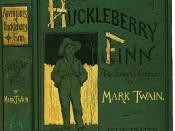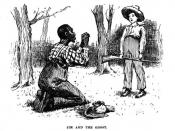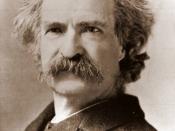Literary Analysis on Gary Soto's "The Pie"
Prominent American authors such as Mark Twain, Jonathan Edwards, and Nathan Hawthorne extensively emphasize in their works the role guilt plays in a person's conscience and society. In Mark Twain's The Adventures of Huckleberry Finn, Twain builds up the plot by thoroughly describing the guilt Huck feels after he helps Jim, the slave, to run away. As a young boy, Huck disregards the society's values and chooses his own path, whether it be right or wrong. Much like his literary predecessors, Gary Soto deals with his own confrontation with the inner conscience after committing an act that he considers sinful. In his memoir "The Pie", Soto achieves to warn his audience of obtaining sinful temporary pleasures at the expense of eternal torture of the conscience by employing the use of literary devices such as metaphor, allusion, and motif.
To begin with, Soto thoroughly describes his feelings before and during the process of stealing the pie through metaphors and allusion.
He states that he steals the pie out of boredom and quotes that "I stood before a rack of pies...and the juice of guilt wetting my underarms". This metaphor indicates that deep within his conscience, Soto struggles between his strict morals and his wild impulse to steal. Through the clever use of the metaphor, Soto compares the sweat from his nervousness to the "juice of guilt", thus implying that even after he has confirmed his decision he still feels morally unjustified. Soto emphasizes his guilty conscience by commenting on the biblical allusion of Eve and the snake. He comments "what scared me...was being thirsty for the rest of my life". Soto draws a connection between the apple the snake offers to Eve and the stolen apple pie. The allusion dramatizes the event...


